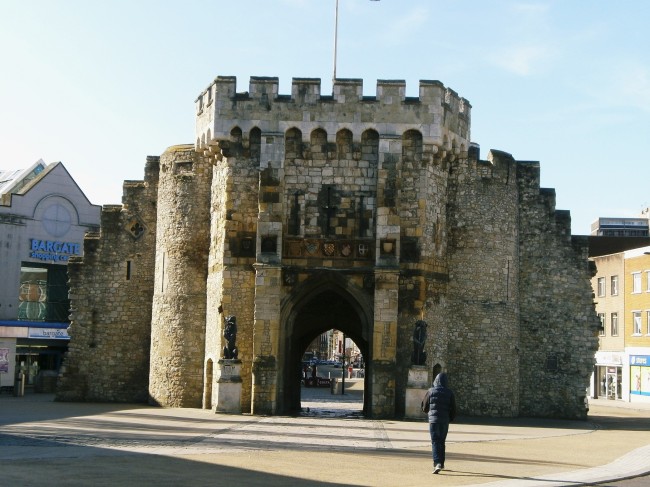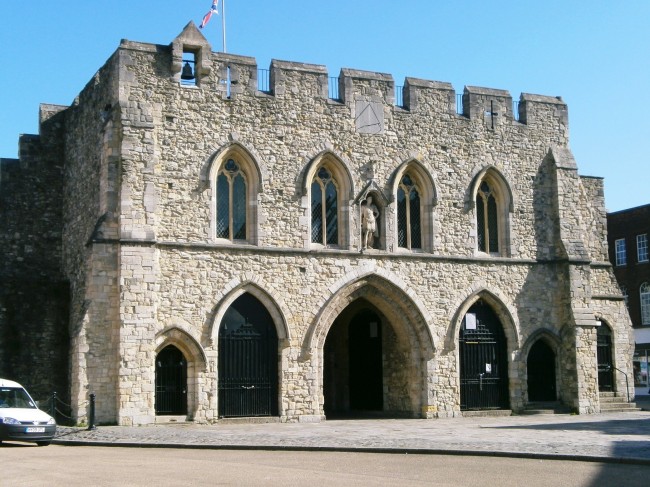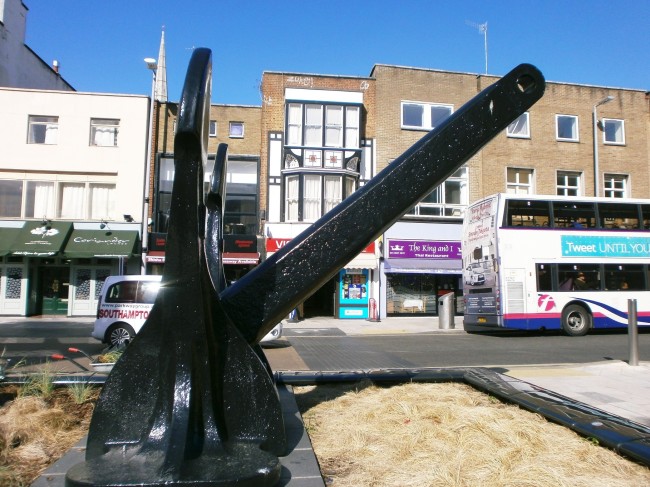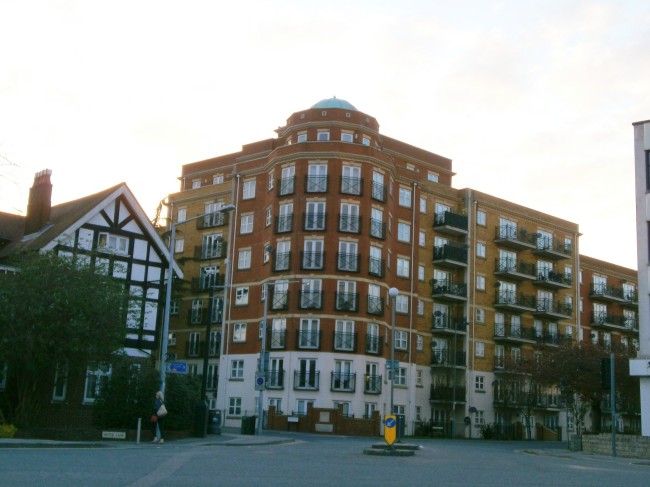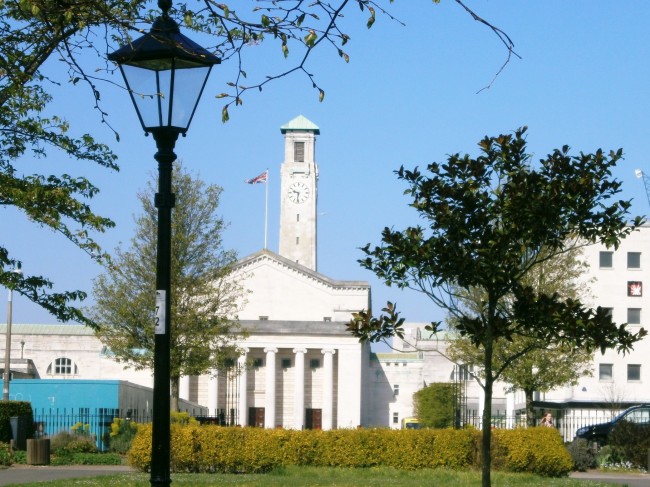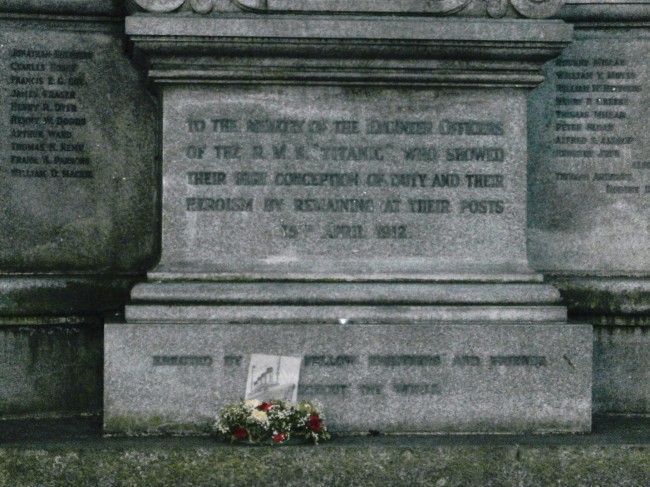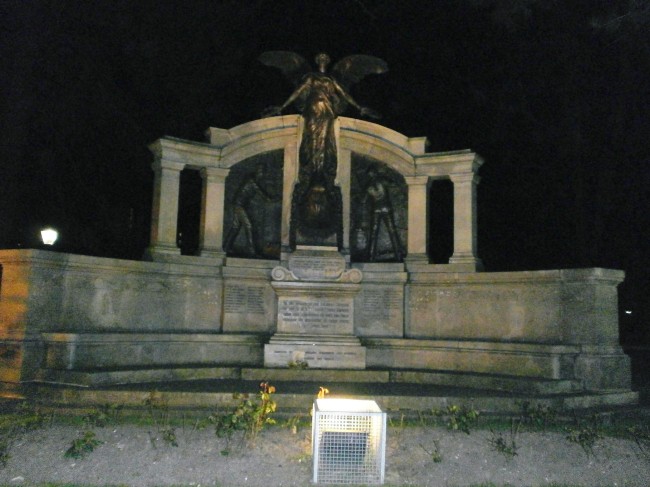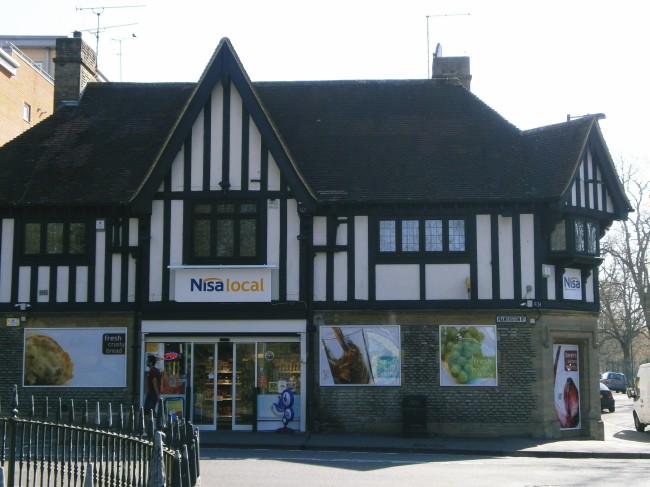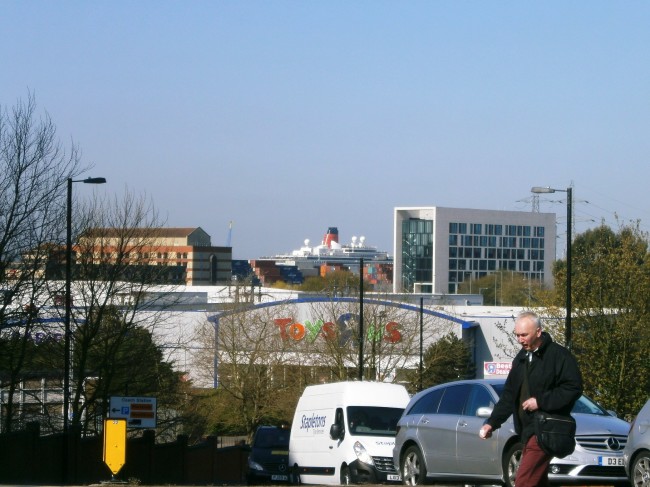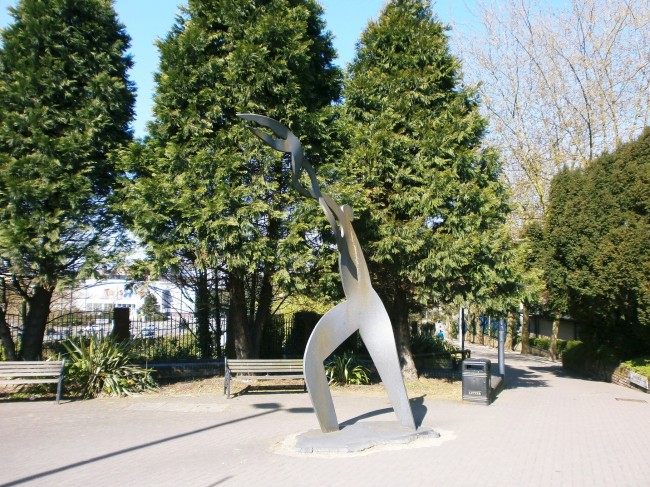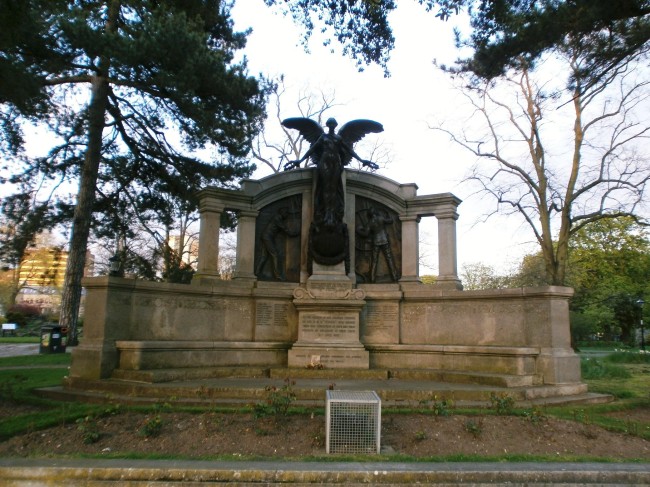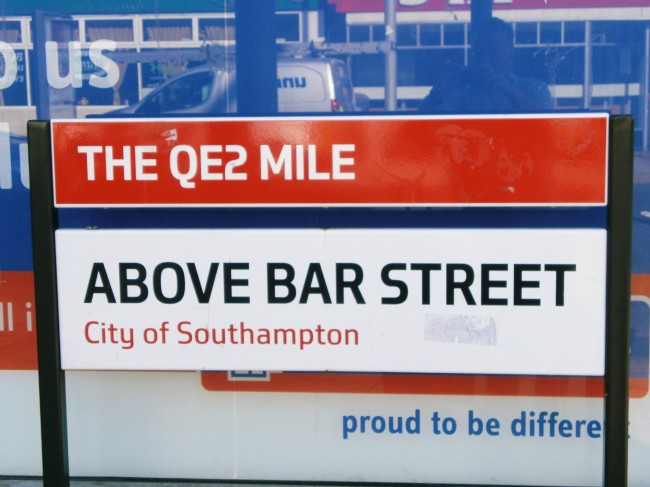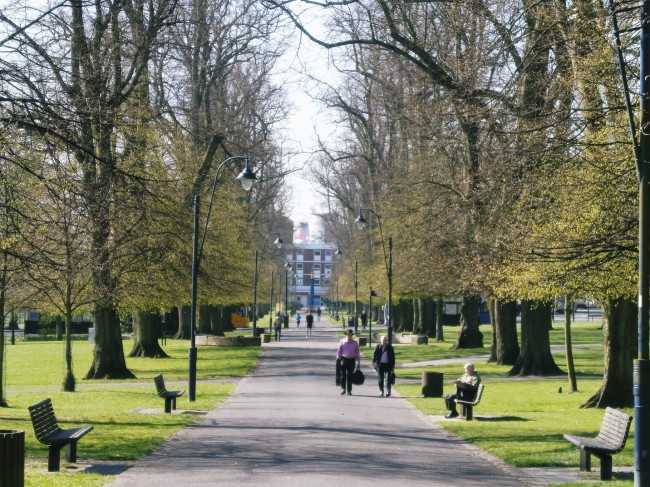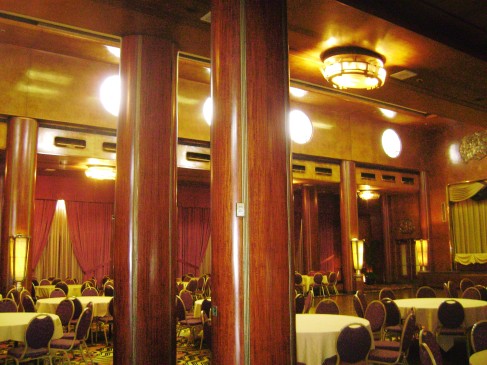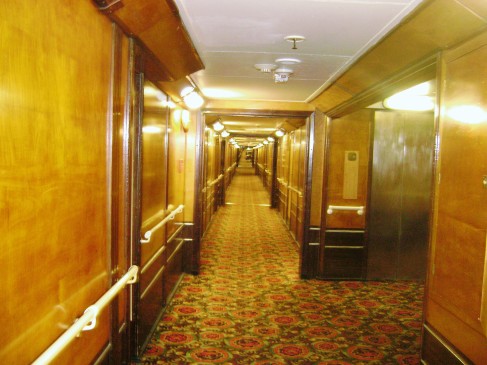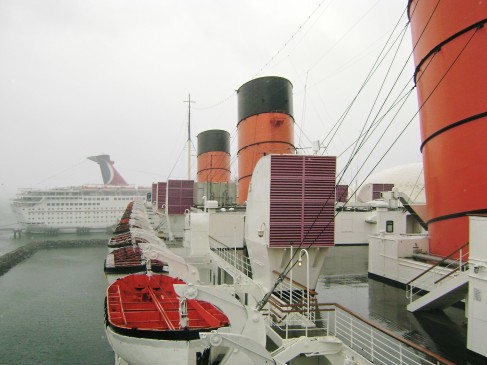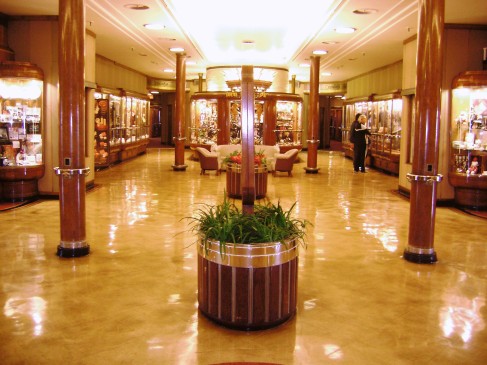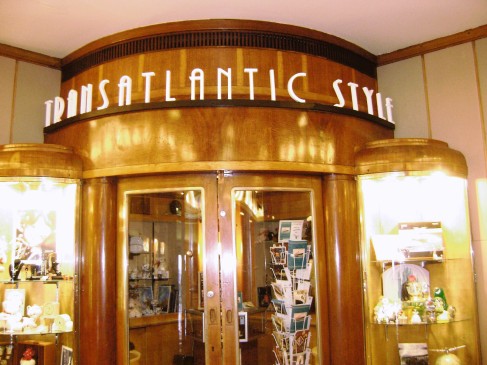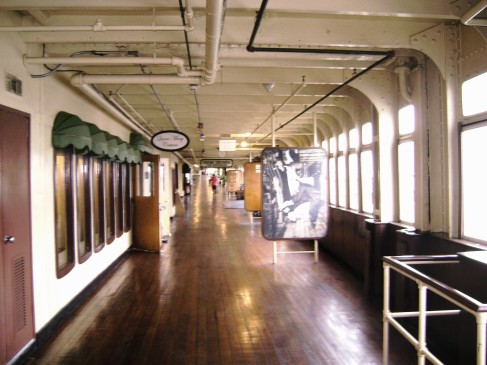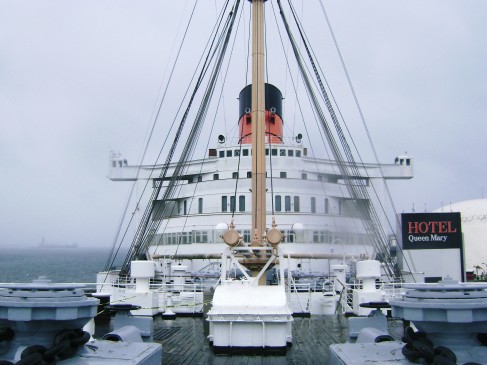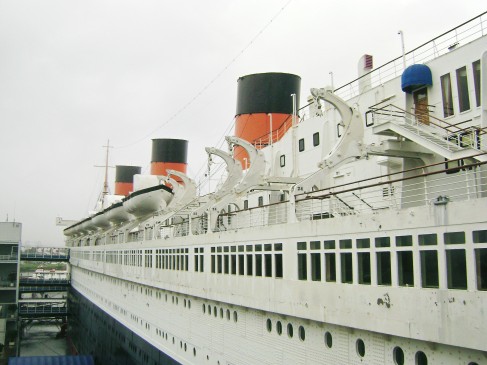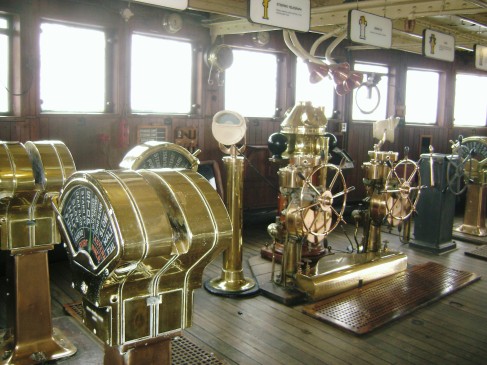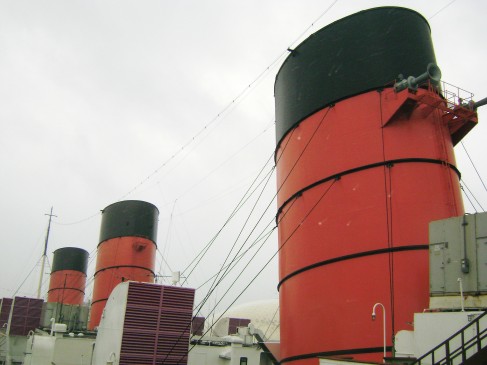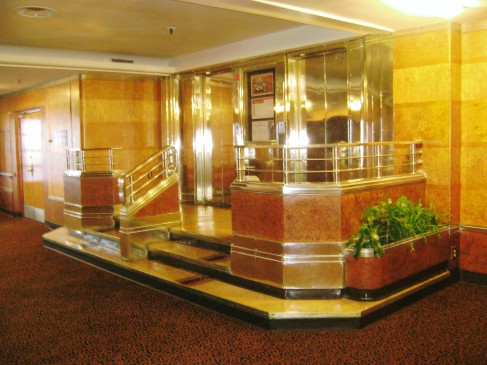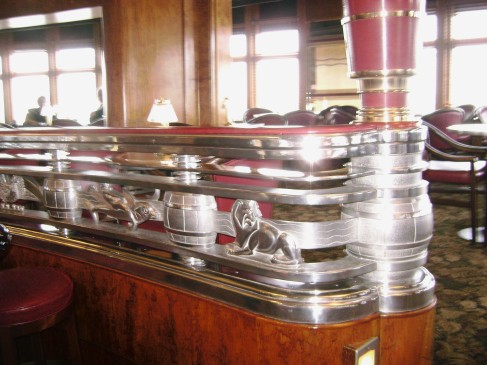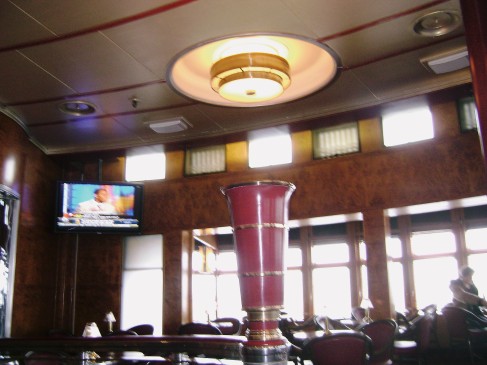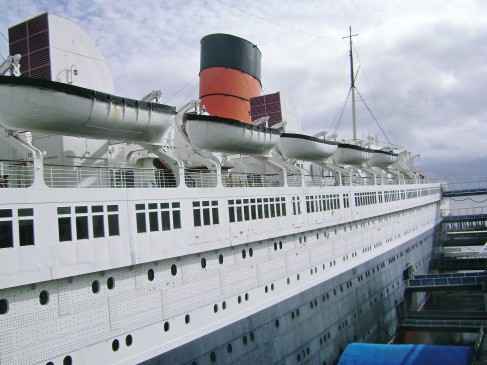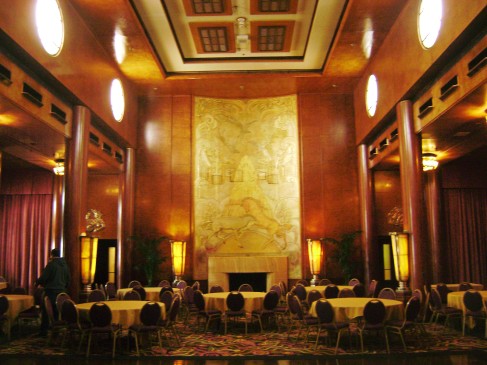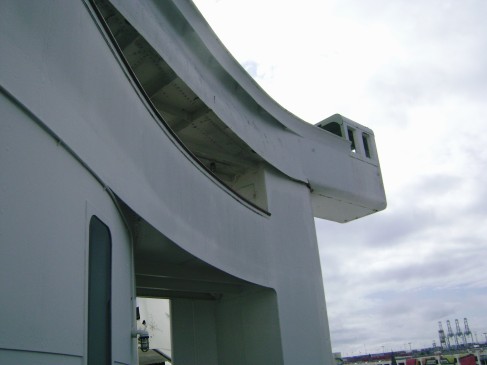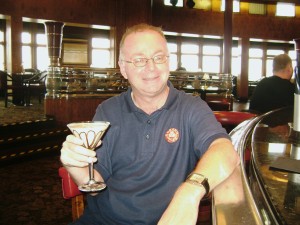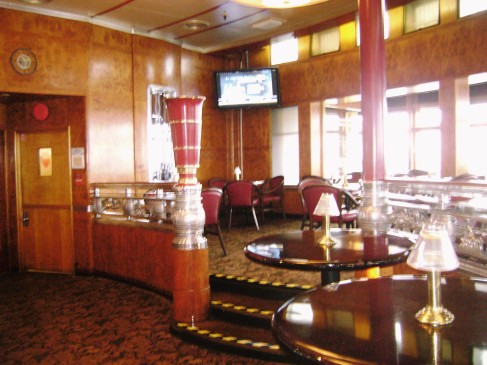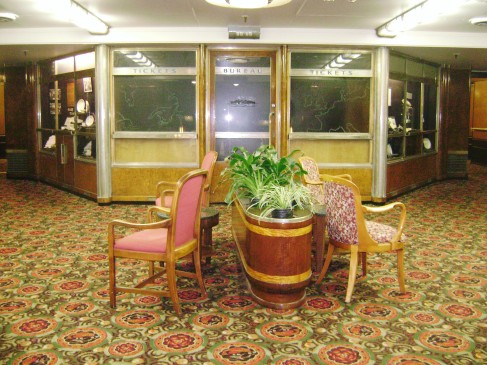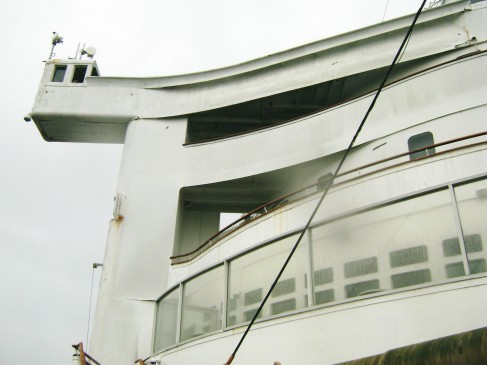 The Imperator was a ship of many firsts; the first to weigh in at over 50,000 tons; the first to exceed more than nine hundred feet in length. The first of a world beating trio that was intended to dominate the lucrative Atlantic passenger trade like nothing ever had before. Even one hundred years later, the sheer, spectacular scale of the towering, Teutonic three stacker is impossible to deny.
The Imperator was a ship of many firsts; the first to weigh in at over 50,000 tons; the first to exceed more than nine hundred feet in length. The first of a world beating trio that was intended to dominate the lucrative Atlantic passenger trade like nothing ever had before. Even one hundred years later, the sheer, spectacular scale of the towering, Teutonic three stacker is impossible to deny.
She was laid down for the Hamburg-Amerika Line (now known as Hapag-Lloyd) as a direct, dramatic response to rival British liners such as Olympic, Titanic, and the upcoming Cunarder, Aquitania. She was the brainchild of the brilliant Albert Ballin, a man of uncompromising taste and style. Ballin had an eye for detail and a grasp of the truly sybaritic, perhaps equalled only by that of Cesar Ritz himself. Ballin was way ahead of his time.
That is probably why he hired the London Ritz architects, Charles Mewes and Arthur Davis, to create the fairy tale interiors of the Imperator. Ballin was determined to outclass all opposition, at every level. One example of this materialised just weeks before the ship’s maiden voyage.
News had somehow leaked out that the new Aquitania would actually be a few feet longer than the Imperator on her forthcoming 1914 debut. Within days, a huge crate arrived at the German liner’s fitting out dock.
It contained a monstrous, gilt trimmed, giant golden eagle, clutching a globe of the world in it’s talons. It was bolted like a figurehead of old onto the prow of the Imperator. And it did, indeed, have the desired effect of making her longer than her British rival.
The bird did not last. A howling Atlantic storm literally clipped the eagle’s wings within a few weeks of the Imperator’s entry into service. The rest of the largely unloved, scowling brute was discreetly removed soon afterwards.
The Imperator was launched in 1912, just six weeks after the apocalyptic sinking of the Titanic. The original, intended name was Europa but, with an entire continent now increasingly on edge at the sabre rattling in the royal houses of Europe, Ballin opted to name the ship Imperator, after his friend and mentor, the erratic, unstable Kaiser Wilhelm II. It was jingoistic sleight of hand of the first order.
The first swing of the champagne bottle somehow failed to connect with the prow of the biggest man made object on the planet. The inbound bottle was deftly caught by the Kaiser himself, who smashed it neatly against the ship that now bore his name. Amid much pomp and ceremony, the huge hull slid sedately into the waters of the Elbe.
The inquiries into the Titanic disaster in both England and America resulted in a whole raft of new maritime legislation; none of which had been in force when the Imperator had first taken shape on a drawing board. The most obvious of these was a mushrooming of literally dozens of extra lifeboats, many of them stowed in impromptu bays, carved out of the lower superstructure. These unplanned, yet necessary changes upset her original centre of stability quite a lot.
Ballin sheathed her incredible, unmatched interiors in a byzantine brew of marble, gilt, and deep, rich carpeting. Potted palms flanked her vast, vaulting staircases in a series of triumphant cascades. Those sublime interiors were a cake rich confection of stunning old masters, over the top statuary, and vast chandeliers that held sway above a sea of deep, clubby sofas and chairs. It was, indeed, the ambiance of the Ritz afloat, and the overall look was quite simply stunning.
And it all conspired to make her hugely unstable. On her maiden arrival in New York, she leaned ominously to port as thousands of passengers rushed the railings to get a first glimpse of the Statue Of Liberty. New York harbour pilots promptly nicknamed her the ‘Limperator’. The tug boat captains there said that she never came in on an even keel.
What Ballin could do with her, he did. Thousands of tons of pig iron were added to her as ballast; some nine foot was cut from the top of each of her trio of towering smoke stacks. Inside, a token reduction was made in the opera house style, overblown splendour. It all helped but, to the very end of her days, both she and her two sisters would remain ‘tender’ ships at sea.
But the Imperator was an instant, immediate success. In her first year of service, she was one of the most popular and profitable liners on the Atlantic. The outbreak of the Great War found her safely at home in Hamburg, where she would remain for the duration of the conflict.
Her brand new sister was not so lucky. The Vaterland, second of the Ballin trio, was in New York, in the middle of her third round trip, when the war descended. Ordered to remain put, she was seized as a war prize by the Americans in 1917, outfitted as a troopship, and renamed the Leviathan. She never sailed under the German flag again.
And neither did the poor, proud Imperator. The 1918 armistice surrendered the entire German merchant marine- the largest in the world- to it’s former enemies. And, as the largest ships in the world, the Ballin trio were by far the biggest prizes of all. The only question was; who would get them?
Leviathan stayed with the United States Lines, who put her into passenger service in 1922. Prohibition crippled her from the start. Wet outside and largely dry on the inside, she never had a chance. She was withdrawn from service in 1934, and finally scrapped in 1938.
Third of the class, Bismarck was launched just weeks before the war broke out, and all work was stopped on her for the duration. She was completed for the White Star Line in 1922. Renamed the Majestic, White Star marketed her as ‘The Queen of the Western Ocean’. She was the largest ship in the world until the debut of the Normandie in 1935. Ultimately converted into the cadet ship Caledonia, she burned and sank at her pier just prior to the outbreak of another global conflict in September, 1939.
The Imperator went to Cunard, as a replacement for the torpedoed Lusitania. She was converted to oil burning, painted in Cunard colours and renamed the Berengaria, before being put back into service on the Atlantic ferry from Southampton to New York.
The Berengaria was, in fact, the first Cunard liner to be actually named after an English queen; the lady in question had been the wife of Richard the Lionheart.
Cunard had the good sense to leave her plush interiors pretty much as they were, apart from some subtle rearranging of the first class public rooms. Her vast, beautiful Pompeiian swimming pool had been modelled after one that can still be seen at the Royal Automobile Club in London. Even today, it is still considered by many to be the most beautiful ever crafted on any ship.
The Berengaria sailed the gilded Atlantic run with her former rivals and new fleet mates, Mauretania and Aquitania. She became the Cunard line flagship and, by some inexplicable whim, she also became the most popular ship on the crossing. For several years, she was very much the ship to be seen on. In that incredible age of steamships, baseball, flapper girls and prohibition, the Berengaria was the brightest jewel in the company’s crown. As such, she was immensely profitable to boot.
That all changed with the 1927 debut of the splendid new Ile De France. Swathed in a stunning new Art Deco look, the swanky new French liner was an instant, spectacular success. Next to her, all the older, pre war liners suddenly looked dowdy, outdated, and hopelessly behind the times. And worse was to come.
The 1929 stock market crash, and the Great Depression that followed, decimated the liner trade on the Atlantic by almost half within four years. At the same time, a string of new, government subsidised, Italian and-ironically, German- ships began to appear on the run. State of the art and sleek, they were soon snapping at the heels of the doughty old timers still being operated by both Cunard and White Star. Soon, both premier British shipping lines were in deep trouble.
The Berengaria and her ilk survived by offering five and six day ‘booze’ cruises from New York, up to Halifax, and down to Bermuda. With her bars open around the clock, the iconic Cunarder earned the nickname of the ‘Dead and Bury’er’. It was the equivalent of expecting Audrey Hepburn to appear in pantomime. Cruising eked out her life, at the expense of her soul and reputation. But time was still running out.
On Clydebank, the incomplete, rust shrouded hulk that would one day be the Queen Mary sat, deserted by everyone save the birds that nested in her. As a condition for lending the money to finally complete her, the British government forced the shotgun wedding of those age old rivals, Cunard and White Star.
With Cunard holding a 62-38 per cent majority shareholding in the new amalgam, the inevitable disposal of suddenly redundant, surplus tonnage hit White Star especially hard. It also largely explains why the Majestic went to the block, while the Berengaria earned a reprieve.
By 1936, the ageing diva was still making the Atlantic crossing, but now in company with the brand new Queen Mary. Hopelessly outclassed by flash, new foreign tonnage like the Rex, the Normandie and-irony of ironies- the new Europa, her end was hastened by a rash of small, electrical fires that started to break out all over through the summer of 1938. She was finally sold for scrap that same December. Her eventual replacement would be the second Mauretania of 1939.
Her story had many ups and downs, but ultimately, Ballin’s dream ship endured for almost a quarter of a century. Her triumphs, style, and sheer splendour are undeniable; the stuff of true ocean going legends. One hundred years after her launch, the Imperator has truly earned her berth in the Valhalla of vanished North Atlantic nobility.
Please feel free to share with friends and family







